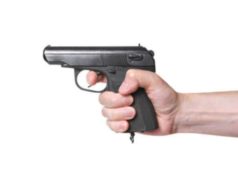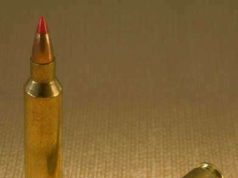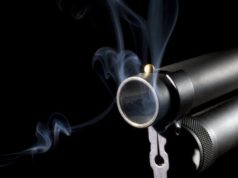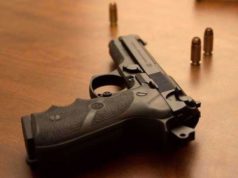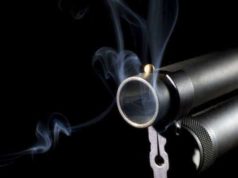Contents

Sawed-Off Shotgun Regulations By State
Introduction
A sawed-off shotgun is a shotgun with a modified barrel that is cut down to less than 18 inches in length. The smaller size of the barrel makes it easier to conceal, which has led to the outlawing of the weapon in many states. In the United States, the regulation of sawed-off shotguns is enforced differently at the federal and state levels. This article aims to provide an in-depth analysis of sawed-off shotgun laws in the top 5 states in America.
Largest 5 States in US Regulations
1. California
In California, possession of a sawed-off shotgun is illegal under California Penal Code Section 33210. Under this law, any person who possesses, manufactures, sells, transfers, or offers for sale a sawed-off shotgun is guilty of a felony punishable by imprisonment for 16 months, 2, or 3 years.
2. Texas
In Texas, possession of a sawed-off shotgun is legal under certain conditions. Texas Penal Code 46.05 prohibits the possession of “prohibited weapons” which includes sawed-off shotguns. However, the statute allows certain individuals to possess a sawed-off shotgun for specific purposes, such as for use in a movie or theatrical production, for use in a sporting event, or for use by a peace officer. Individuals who obtain a federal tax stamp under the National Firearms Act are also permitted to possess a sawed-off shotgun in Texas.
3. New York
In New York, possession of a sawed-off shotgun is illegal under New York Penal Law 265.02. Under this law, possession of a sawed-off shotgun is considered a criminal possession of a weapon in the third degree and is punishable by a fine and imprisonment of up to seven years. Possession of a sawed-off shotgun in New York is also considered a class D felony with a mandatory minimum sentence of two years.
4. Florida
In Florida, possession of a sawed-off shotgun is legal under specific conditions. Florida law defines a sawed-off shotgun as any shotgun with a barrel less than 18 inches long or an overall length of less than 26 inches. Under Florida Statute 790.221, any person who possesses a sawed-off shotgun is guilty of a third-degree felony, unless the person has a valid federal tax stamp under the National Firearms Act, which permits possession of the weapon.
5. Pennsylvania
In Pennsylvania, possession of a sawed-off shotgun is illegal. Under Pennsylvania law, possession of a sawed-off shotgun is considered a prohibited offensive weapon, and it is a felony to manufacture, transport, sell, or possess such a weapon. The penalty for a violation of this law is a fine of up to $10,000, a sentence of up to ten years in prison or both.
Other States:
1. Alabama
In Alabama, possession of a sawed-off shotgun is legal under certain conditions. To own a sawed-off shotgun, an individual must obtain a Class III license under the National Firearms Act. Once licensed, the sawed-off shotgun must be registered with the ATF, and the owner must pay an annual tax of $5.
2. Arizona
In Arizona, possession of a sawed-off shotgun is legal under certain conditions. An individual must be at least 21 years of age and legally able to purchase a firearm to possess a sawed-off shotgun. Ownership of such a firearm requires registration with the ATF and payment of an annual tax.
3. Colorado
In Colorado, possession of a sawed-off shotgun is illegal under Colorado Revised Statutes § 18-12-102. Possession of a sawed-off shotgun is considered a class 5 felony and is punishable by up to three years imprisonment and a fine of up to $100,000.
4. Georgia
In Georgia, possession of a sawed-off shotgun is legal under certain conditions. A person must obtain a federal tax stamp to possess a sawed-off shotgun legally. After obtaining the tax stamp, the shotgun must be registered with local law enforcement officials.
5. Illinois
In Illinois, possession of a sawed-off shotgun is illegal under 720 ILCS 5/24-1(a)(6). Possession of a sawed-off shotgun is considered a class 3 felony and is punishable by up to five years imprisonment and/or a fine of up to $25,000.
6. Massachusetts
In Massachusetts, possession of a sawed-off shotgun is illegal under Massachusetts General Laws Chapter 140, Section 121. Possession of a sawed-off shotgun is considered a crime and is punishable by up to ten years imprisonment.
7. Michigan
In Michigan, possession of a sawed-off shotgun is legal under certain conditions. It is required that the individual obtains a federal tax stamp under the National Firearms Act to own a sawed-off shotgun legally.
8. North Carolina
In North Carolina, possession of a sawed-off shotgun is legal under certain conditions. The weapon must be registered with the local sheriff’s department and the individual must obtain a federal tax stamp under the National Firearms Act to possess a sawed-off shotgun legally.
9. Ohio
In Ohio, possession of a sawed-off shotgun is illegal under Ohio Revised Code § 2923.11. Possession of a sawed-off shotgun is considered a third-degree felony and is punishable by up to five years imprisonment and a fine of up to $10,000.
10. Virginia
In Virginia, possession of a sawed-off shotgun is legal under certain conditions. The individual must obtain a federal tax stamp under the National Firearms Act to possess a sawed-off shotgun legally. The weapon must also be registered with the ATF and local law enforcement officials.
Additional State Updated
1. Connecticut
In Connecticut, possession of a sawed-off shotgun is illegal under Connecticut General Statutes Section 53-202(a). Possession of a sawed-off shotgun is considered a Class C felony and is punishable by up to 10 years in prison and a fine of up to $10,000.
2. Delaware
In Delaware, possession of a sawed-off shotgun is legal but must be registered with the Delaware Department of Safety and Homeland Security.
3. Florida
In Florida, possession of a sawed-off shotgun is legal under certain conditions. The individual must obtain a federal tax stamp and register the weapon with the ATF and local law enforcement officials.
4. Idaho
In Idaho, possession of a sawed-off shotgun is legal as long as the weapon is legally obtained and the individual is not prohibited from owning firearms.
5. Indiana
In Indiana, possession of a sawed-off shotgun is legal under certain conditions. The individual must obtain a federal tax stamp and register the weapon with the ATF and local law enforcement officials.
6. Kansas
In Kansas, possession of a sawed-off shotgun is legal under certain conditions. The individual must obtain a federal tax stamp and register the weapon with the ATF and local law enforcement officials.
7. Kentucky
In Kentucky, possession of a sawed-off shotgun is legal under certain conditions. The individual must obtain a federal tax stamp and register the weapon with the ATF and local law enforcement officials.
8. Maine
In Maine, possession of a sawed-off shotgun is legal as long as the weapon is legally obtained and the individual is not prohibited from owning firearms.
9. Mississippi
In Mississippi, possession of a sawed-off shotgun is legal under certain conditions. The individual must obtain a federal tax stamp and register the weapon with the ATF and local law enforcement officials.
10. Missouri
In Missouri, possession of a sawed-off shotgun is legal under certain conditions. The individual must obtain a federal tax stamp and register the weapon with the ATF and local law enforcement officials.
Federal Regulations
In addition to state laws, sawed-off shotguns are also regulated by federal laws in the United States. According to the National Firearms Act (NFA), which was signed into law in 1934, a sawed-off shotgun is considered a “Class III” weapon, which means it is a restricted firearm that requires special approval and a federal tax stamp to possess.
To obtain a federal tax stamp for a sawed-off shotgun, individuals must submit an application to the Bureau of Alcohol, Tobacco, Firearms, and Explosives (ATF) and pay a $200 tax. The ATF will then conduct a thorough background check on the applicant before issuing the tax stamp, which authorizes the individual to possess the weapon legally.
Conclusion
Sawed-off shotguns are highly regulated in the United States, and possession of such weapons is illegal in many states. Understanding the specific laws and regulations governing the possession of sawed-off shotguns in individual states is essential for individuals who wish to possess such a weapon legally. It is also important to note that the federal government heavily regulates sawed-off shotguns under the National Firearms Act, and obtaining a federal tax stamp is necessary to possess a sawed-off shotgun legally. Consulting with state and federal law enforcement agencies can provide additional information and guidance for individuals looking to understand the legality of sawed-off shotguns in their state.
Understanding Sawed-Off Shotguns: A Comprehensive Guide
Introduction
Sawed-off shotguns, with their shortened barrels and menacing reputation, have been the subject of fascination and controversy for decades. Often portrayed in movies and television as the weapon of choice for criminals, the reality behind these firearms is far more complex. In this comprehensive guide, we will delve into the world of sawed-off shotguns, exploring their history, legal status, characteristics, and their place in society.
The History of Sawed-Off Shotguns
To understand the sawed-off shotgun, one must first examine its historical origins. Shotguns themselves have a long and storied history, dating back to the 17th century. These firearms were originally used for hunting, but they soon found their way into military and law enforcement applications due to their versatility and firepower.
The concept of “sawing off” a shotgun’s barrel can be traced back to the early 19th century. Criminals and outlaws sought to make their shotguns more concealable and easier to maneuver, giving birth to the sawed-off shotgun. These shortened firearms could be hidden under coats and jackets, making them ideal for nefarious activities.
Characteristics of Sawed-Off Shotguns
Sawed-off shotguns are characterized by their shortened barrels, typically measuring less than 18 inches in length. This modification results in several distinct features and advantages:
Portability: Sawed-off shotguns are highly compact and easily concealed, making them attractive to criminals. Their short barrels allow for discreet carrying, whether in a trench coat or a bag.
Spread: The shortened barrel can affect the spread of the shotgun pellets, often leading to a wider pattern at shorter distances. This can be advantageous in close-quarters combat but reduces accuracy at longer ranges.
Firepower: Despite their compact size, sawed-off shotguns can deliver devastating firepower, especially at close range. The wide pellet spread can inflict significant damage to targets.
Intimidation Factor: The mere sight of a sawed-off shotgun can be intimidating, often serving as a deterrent to potential threats.
III. Legal Status of Sawed-Off Shotguns
The legality of sawed-off shotguns varies significantly from one jurisdiction to another. In the United States, for instance, the National Firearms Act of 1934 (NFA) regulates the possession and sale of sawed-off shotguns. Under the NFA, these firearms are classified as “short-barreled shotguns” and are subject to strict regulations, including the following:
Registration: Owners of sawed-off shotguns must register them with the Bureau of Alcohol, Tobacco, Firearms and Explosives (ATF). This involves a thorough background check and the payment of a $200 tax stamp.
Length Restrictions: The NFA sets specific criteria for the length of the shotgun’s barrel and the overall length of the firearm to distinguish it from a sawed-off shotgun. Any shotgun with a barrel length of less than 18 inches or an overall length of less than 26 inches is considered a short-barreled shotgun.
Prohibited Ownership: Convicted felons, individuals with certain mental health issues, and those with a history of domestic violence are prohibited from owning sawed-off shotguns.
It’s important to note that the legal requirements and definitions surrounding sawed-off shotguns may differ in other countries. Always check and adhere to local laws and regulations regarding firearms.
Uses and Misuses of Sawed-Off Shotguns
Sawed-off shotguns have both legitimate and nefarious uses, and understanding their roles in society is crucial:
Hunting: Some hunters use sawed-off shotguns for specific purposes, such as hunting in dense woods or for sport shooting. These firearms are particularly effective in close-quarters hunting scenarios.
Home Defense: In some cases, homeowners may choose to keep a sawed-off shotgun for home defense due to its intimidation factor and stopping power at close range.
Criminal Activity: Unfortunately, sawed-off shotguns have often been associated with criminal activities, including robberies, assaults, and murders. Their ease of concealment and devastating firepower make them attractive to criminals.
Law Enforcement: Law enforcement agencies may use short-barreled shotguns for specific tactical applications, such as breaching doors or disabling vehicles.
Safety and Responsible Ownership
For those who legally own sawed-off shotguns, responsible ownership and safety are paramount. Here are some key considerations:
Safe Storage: Firearms should be stored securely in a locked container or safe, away from children and unauthorized users.
Training: Owners should receive proper training in firearm safety and use, especially for a firearm as powerful and potentially dangerous as a sawed-off shotgun.
Compliance: Always adhere to local, state, and federal laws regarding the possession and use of sawed-off shotguns.
Maintenance: Regularly maintain and inspect your firearm to ensure it functions safely and reliably.
Conclusion
Sawed-off shotguns are firearms with a complex history and reputation. They have legitimate uses, such as hunting and home defense, but are also often associated with criminal activity due to their concealability and firepower. Understanding the legal regulations surrounding these firearms is crucial, as ownership and possession are subject to strict rules in many jurisdictions.
Responsible ownership, safety, and adherence to the law are essential aspects of owning any firearm, and sawed-off shotguns are no exception. Whether viewed as a symbol of criminality or a tool for legitimate purposes, sawed-off shotguns remain a topic of debate and intrigue in the world of firearms.
The various shotgun parts each provide for certain functions of a shotgun. For instance, the trigger is just one of the shotgun parts that propels the ammunition through the barrel of the gun. The length of the barrel directly effects the firing power of the weapon and the speed at which the ammunition is propelled out of the weapon.
Sawed off shotguns can be especially deadly because the ammunition is propelled faster than it would be if the barrel was complete. In addition, sawed off shotguns are easy to conceal, which makes them extremely dangerous for law enforcement in certain situations, such pulling over a vehicle that may contain a sawed off shotgun.
In the United States, it is illegal to posses a sawed off shotgun that has a barrel length of less than eighteen inches, unless the individual has obtained a taxed permit from the ATF. That permit requires a background check and payment of an excise tax for that weapon. However, each state has different laws which govern the types of weapons that residents are allowed to own and a state may forbid ownership of a sawed off shotgun, simply because of the ease with which it can be concealed.
Sawed off shotguns can be easily hidden and they are very powerful. However, they may not be as accurate as shotguns that have the longer barrel. That inaccuracy is another danger present by use of this type of weapon.

